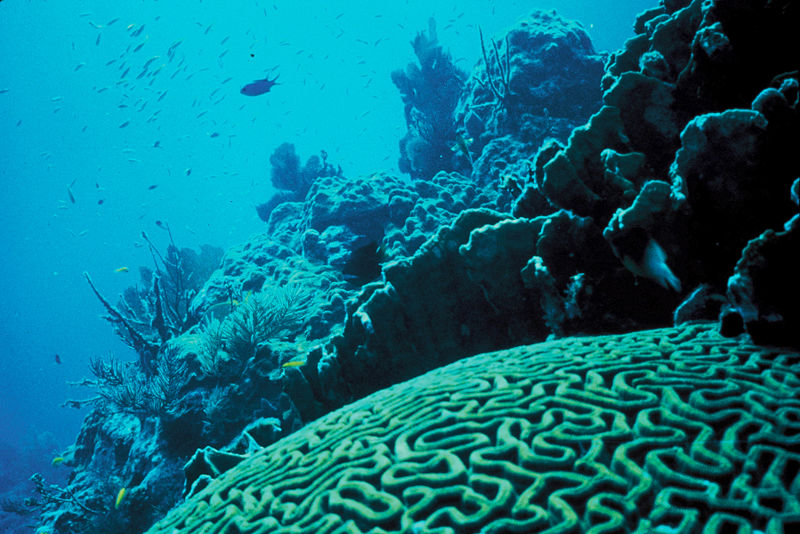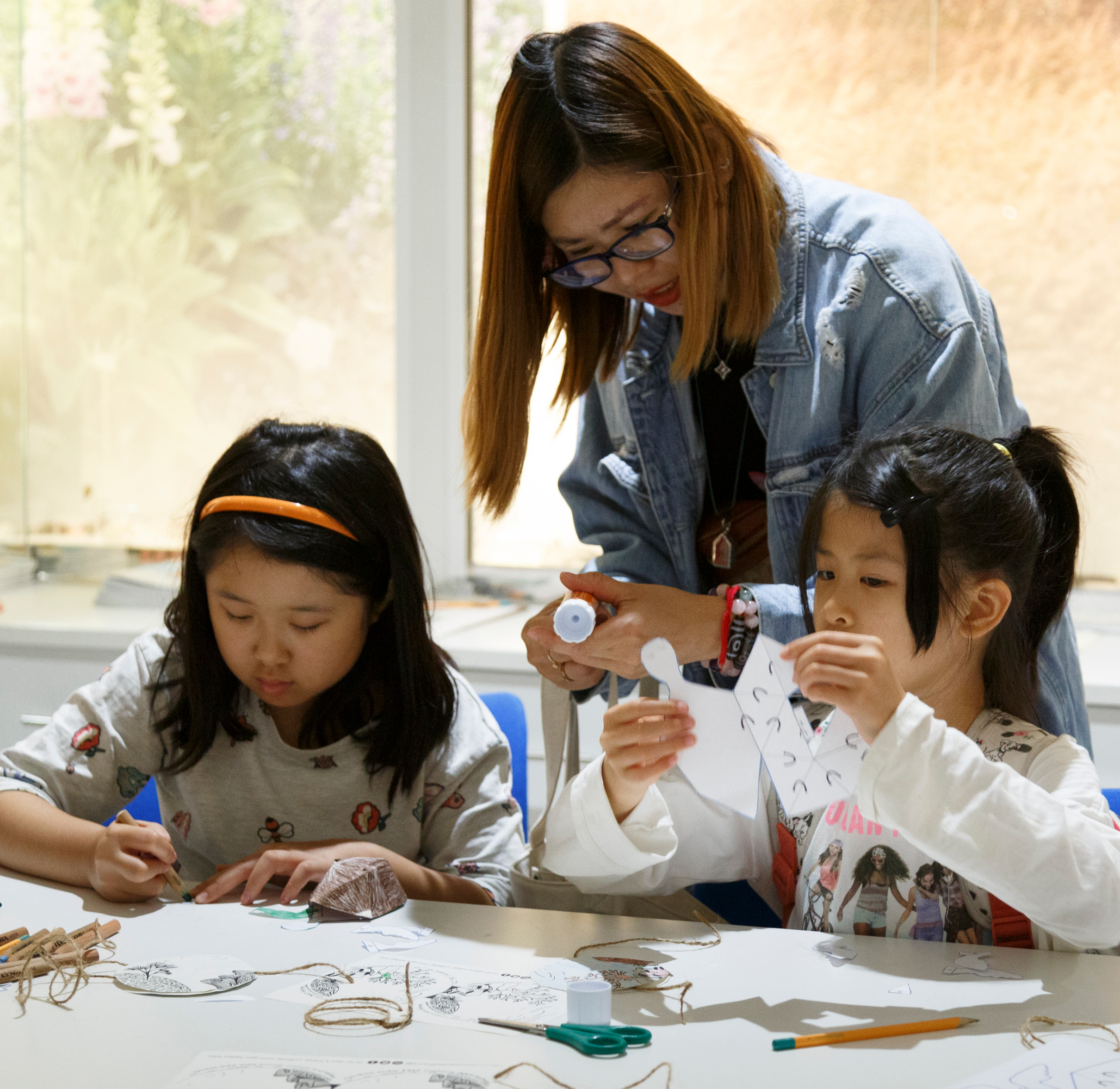
Just beneath the waves in shallow tropical seas you’ll find a world teeming with life. It’s here that we find coral reefs – colourful habitats where countless creatures live. This Nature Classroom will explore these fascinating ecosystems and how they are being affected by climate change.
First we will uncover what corals are, then make a coral reef spinner to explore coral bleaching. We’ll then look at the process of photosynthesis – key to so much life on Earth – and finish with a deep dive into the human impacts on coral reefs.
These activities support learning in the following areas:
Identifying that most living things live in habitats to which they are suited.
Different habitats provide for the basic needs of different kinds of animals and plants, and how they depend on each other.
Animals found in less familiar habitats.
Recognise that environments can change and that this can sometimes pose dangers to living things.
How animals and plants are adapted to suit their environment in different ways and that adaptation may lead to evolution.

What is a coral?
Reef-building corals are formed by colonies of hundreds of tiny indvidual coral animals called polyps. They lay down an exoskeleton (a skeleton on the outside) made of calcium carbonate. This makes the hard structure we are familiar with seeing in coral reefs. Without their skeleton, these marine invertebrate animals look a little like a jellyfish with its tentacles waving upwards.

Polyps grow slowly, laying down their exoskeleton in different shapes around them. The form of the exoskeleton is different for different species of coral, from the rounded mass of a brain coral to the branches of a stag-horn coral.

Task: Try drawing your own coral diagram. Be sure to label it up.
Corals have a very special relationship with a group of single-celled organisms called zooxanthellae. Zooxanthellae are able to photosynthesize like plants, meaning that they can create food using sunlight.The corals welcome the zooxanthellae into their tissues and provide them with protection, as well as an excellent sunbathing spot in clear, warm oceans. In return, the zooxanthellae share its food with the coral. This type of relationship where both organisms benefit and is known as symbiosis.

Another way for corals to eat is to use their tentacles to catch passing food particles. They often do this at night when there are fewer predators about.
What is ‘coral bleaching’?
Animals have evolved over millions of years to live within the environment that they find themselves in. When that environment changes too quickly, they find it difficult to adapt in time to surive.
Higher temperatures and warmer oceans, among other things, put the coral under stress. This causes the zooxanthellae to be expelled (thrown out) by the coral, a process known as bleaching.
Much of the colour of the living tissues of a coral comes from the zooxanthellae within. Once the zooxanthellae are gone, the tissues are almost transparent and the white colour of the coral’s stoney skeleton shows through.

This coral is still alive but at great risk without the food that the zooxanthellae provide. Left too long like this, the coral polyps will die. However, researchers are finding that if temperatures drop again, corals can regain the zooxanthellae from the surrounding water.

Task: Get thinking with a reef spinner
Download our Reef Spinner activity sheet:
- You’ll need; paper, string, colours, glue.
- Follow the instructions on the activity sheet, cutting around the edge of your chosen reef.
- Create a vibrant reef on one side only, using whichever materials you like best. Paint, collage, pencils or crayons; it just needs to be as colourful as coral reefs can be.
- Now turn over your reefs, stretch a piece of string across the middle of the lower one and fold the upper reef down. Sealing the string on the inside.
- Twirl the string between your fingers and watch your reef lose and regain its colour.

Task: Experiment with Sunlight
Photo by Retha Ferguson
Like zooxanthellae, plant cells can photosynthesise. They contain a green pigment called chlorophyll that absorbs light and uses its energy to make food from water and carbon dioxide: this is the process called photosynthesis.
Stressed coral will loose their zooxanthellae and their pigments go with them. This exposes the corals’ skeletons, which are white.
You can create a similar colour-changing phenomenon in grass by covering a small area for a few days. Grass responds to reduced sunlight by slowing the production of chlorophyll. This results in the green colour fading as the chlorophyll pigments degrade:

- Select flat materials in a range of transparencies; such as clear, coloured and opaque containers or lids.
- Place these onto an area of grass and weigh them down with stones so that they don’t blow away.
– If you don’t have any grass to cover you can grow some cress in a tray and select small-sized covering materials. - Return in 5-6 days to compare the changes to each covered patch.
- Record your findings using a series of photographs.
In corals, removal of the zooxanthellae with their colourful pigments reveals the white skeleton of the coral. In grass, chlorophyll usually absorbs blue and red light, but reflects green light, which is why we see plants as green. When sunlight is blocked, the lack of chlorophyll means that the green light is no longer reflected, so the plant appears less green.
- Collect your thoughts or conclusions in writing, on a video recording, or with a drawing. Think about:
- What colour is the pigment which helps with creating food from sunlight (chlorophyll)?
- What happens to the plant when sunlight is blocked completely?
- Can a plant gain enough food without sunlight?
- What about corals? How might the loss of their zooxanthellae (and food created from sunlight) affect them?
- How can we help corals keep their zooxanthellae?
The full experiment notes can be found on education.com
Habitat change and human impact

Corals are found in all of Earth’s oceans, from the South Pacific to the North Sea, but they only build coral reefs in warm, shallow seas. As well as being home to many different coral species, they also provide an important ecosystem for marine life, offering food and shelter among their crevices and branches for animals including fishes, molluscs, sea urchins and sponges.
Listen to the sound of the reef from The Naked Scientists here
Why not create your own thriving, animated coral reef habitat? Find out how, plus plenty more reef-themed Crafty Creatures ideas here: Dive into a Coral Reef
Reefs do a lot of positive things for humans. They provide food, they protect our shorelines during storms and from flooding, they create jobs based on tourism, and even contribute to the development of medicines.

However, people pose the greatest threat to coral reefs. Overfishing and destructive fishing (such as dredging), polluting environments, and encouraging invasive species all have an impact.
The loss of our coral reefs would mean the loss of all the positive impacts they have, as well as many of the species that rely on reefs for survival.
The documentary below showcases the work of researchers and scientists working to protect our planet’s coral reefs and empower positive action within us all.
Chasing Coral documentary
“Coral reefs around the world are vanishing at an unprecedented rate. A team of divers, photographers and scientists set out on a thrilling ocean adventure to discover why and to reveal the underwater mystery to the world.”
Our team found the information and resources provided by the Chasing Coral documentary extremely useful when developing engaging activities about coral reef conservation. Explore the site here: www.chasingcoral.com
You can share your reef creations with us. Ask a grown-up to help you to tag us in your picture on Facebook, Twitter or Instagram.
Learn more about how scientists are working to protect coral reefs:
Maddie Emms, Department of Zoology, talks about her research on International Women’s Day: click here.



3 thoughts on “Our Changing Reef Habitats”